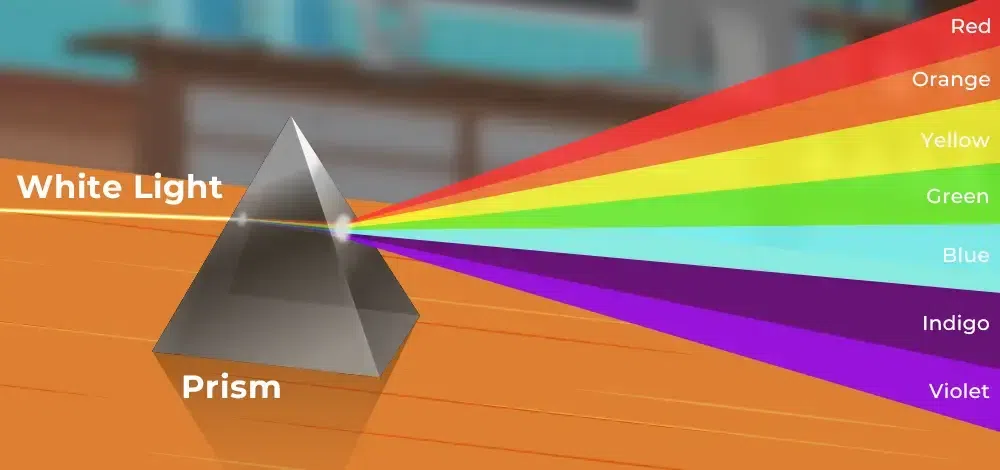Table of Contents
Activity 11.11- Splitting Sunlight with a Prism
Objective- To demonstrate how a prism can split white sunlight into its constituent colours, revealing the spectrum of visible light.
Materials Needed-
- A triangular glass prism.
- A sunny day (to have clear sunlight).
- A white screen or a plain wall.
Procedure-

- Outdoor Setup- Take the prism and the screen outside on a sunny day. It’s important to have direct sunlight for this activity.
- Position the Prism- Hold the prism in the path of sunlight. You can also place it on a stand.
- Project the Spectrum- Adjust the angle of the prism until you see a band of colours projected on the screen or wall.
- Observe the Colours- Look at the array of colours formed. You should see red, orange, yellow, green, blue, indigo, and violet.
Also Check – Class 7 Science -Chapter 15 – Light- Complete Notes
Also Check – Chapter 11- A Detailed Guide to the Light Activities for Class 7 Students
Core Concepts Explained-
- Dispersion of Light- Dispersion is the splitting of white light into its constituent colours. This occurs because different colours of light bend (refract) by different amounts when passing through a prism.
- White Light Composition- White sunlight is made up of a spectrum of colours, each with a different wavelength.
Possible Questions and Answers-
Why does the prism split the light into colours?
- Different colours in sunlight have different wavelengths. When sunlight passes through the prism, each colour bends by a slightly different amount due to its wavelength, leading to the separation of colours.
Are there only seven colours in sunlight?
- The seven colours you see (red, orange, yellow, green, blue, indigo, violet) represent the visible spectrum. Sunlight actually contains more colours than these, including colours we can’t see like ultraviolet and infrared.
Why do the colours always appear in the same order?
- This order is determined by the wavelength of each colour. Red light bends the least, while violet bends the most, causing this specific sequence.
Can we use any glass object to see these colours?
- Not all glass objects can disperse light. A triangular prism is specially shaped to effectively split light into its constituent colours.
What happens if it’s cloudy or if I use artificial light?
- The best results are seen with direct sunlight. Artificial light may not contain all the colours of sunlight, and clouds can diffuse the light, making the colours less distinct.